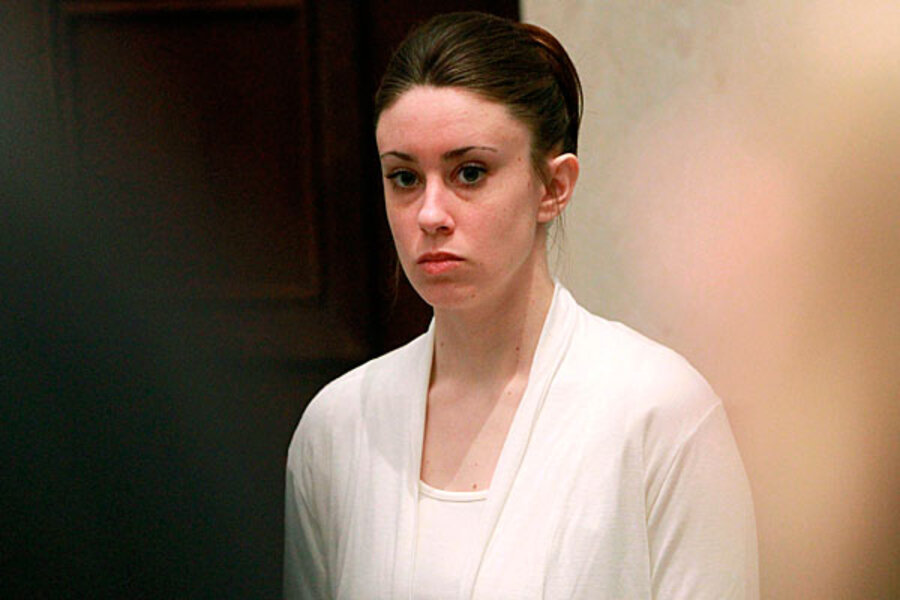Casey Anthony: Did she do a Google search for 'fool-proof suffocation'?
Loading...
| Orlando, Fla.
The Florida sheriff's office that investigated the disappearance of Casey Anthony's 2-year-old daughter overlooked evidence that someone in their home did a Google search for "fool-proof" suffocation methods on the day the girl was last seen alive.
Orange County sheriff's Capt. Angelo Nieves said Sunday that the office's computer investigator missed the June 16, 2008, search. The agency's admission was first reported by Orlando television station WKMG. It's not known who performed the search. The station reported it was done on a browser primarily used by the 2-year-old's mother, Casey Anthony, who was acquitted of the girl's murder in 2011.
Anthony's attorneys argued during trial that Casey Anthony helped her father, George Anthony, cover up the girl's drowning in the family pool.
RELATED: Casey Anthony resurfaces in video diary
WKMG reports that sheriff's investigators pulled 17 vague entries only from the computer's Internet Explorer browser, not the Mozilla Firefox browser commonly used by Casey Anthony. More than 1,200 Firefox entries, including the suffocation search, were overlooked.
Whoever conducted the Google search looked for the term "fool-proof suffication," misspelling "suffocation," and then clicked on an article about suicide that discussed taking poison and putting a bag over one's head.
The browser then recorded activity on the social networking site MySpace, which was used by Casey Anthony but not her father.
A computer expert for Anthony's defense team found the search before the trial. Her lead attorney, Jose Baez, first mentioned the search in his book about the case but suggested it was George Anthony who conducted the search after Caylee drowned because he wanted to kill himself.
Not knowing about the computer search, prosecutors had argued Caylee was poisoned with chloroform and then suffocated by duct tape placed over her mouth and nose. The girl's body was found six months after she disappeared in a field near the family home and was too decomposed for an exact cause of death to be determined.
Prosecutors presented evidence that someone in the Anthony home searched online for how to make chloroform, but Casey Anthony's mother, Cindy, claimed on the witness stand that she had done the searches by mistake while looking up information about chlorophyll.
Many jurors apparently went into hiding amid public outrage over the verdict and refused to comment, but two have said prosecutors couldn't conclusively prove how Caylee died.
Prosecutors Linda Drane Burdick and Jeff Ashton didn't respond to emails from The Associated Press on Sunday.
But Ashton told WKMG that "it's just a shame we didn't have it. This certainly would have put the accidental death claim in serious question."
Baez didn't respond to phone or email messages Sunday from The Associated Press but told WKMG that he expected prosecutors to bring up the search at trial.
"When they didn't, we were kind of shocked," Baez, who no longer represents Anthony, told the station. Her attorney, Cheney Mason, who was also on the trial team, didn't return an email message from AP Sunday, and his office answering service refused to take a phone message.
The sheriff's office didn't consult the FBI or Florida Department of Law Enforcement for help searching the computer in the Anthony case, a mistake investigators have learned from, Nieves said.
RELATED: Casey Anthony acquitted of murder
Copyright 2012 The Associated Press.







